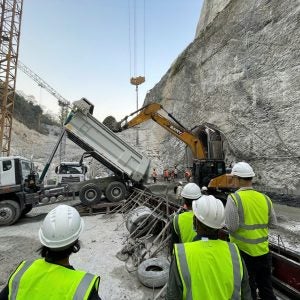The independent forensic team (IFT) investigating the failures of the Edenville and Sanford Dams in Michigan, US, on 19 May 2020 has released its final forensic report, finding that the physical mechanism of the failure of Edenville Dam was static liquefaction (sudden loss of soil strength) in a section of the embankment, which resulted in instability failure of the downstream slope and then breach of the reservoir through the dam.
The report also addresses the characteristics of the flood and other factors that contributed to the failures, and looks at ways the event could have been prevented.
The report says that static liquefaction occurred when Wixom Lake reached a level that was about 3 feet higher than the previous high level which occurred in 1929. When Edenville Dam failed, the resulting downstream flooding caused overtopping failure of Sanford Dam.
It highlights issues with the limited opening of the spillway gates at Edenville, and suggests that the dam failures were foreseeable and preventable with respect to the human judgments, decisions, actions, and inactions during the project history leading up to the May 2020 event.
You can view the full report via the Association of Dam Safety Officials website here.






